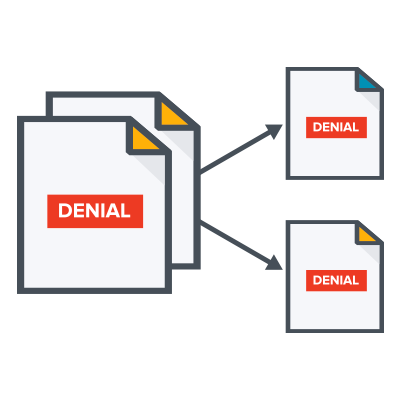- Solutions
Healthcare
- Resources
Why run this play?
“Pended for Request” is one of the largest headaches for the insurance followup team. It drives account touches up, and slows payment down. Executing this play will help reduce denials, accelerate payments, and create less rework for PFS.
Background
When they receive a claim, many insurance carriers will request medical records and/or itemized statements. This could be the result of a high dollar claim, or because the insurer wants to audit charges compared to medical documentation. It could even be a stall tactic to delay reimbursement. Satisfying these requests can be time-consuming due to extensive rework, and payment can be missed entirely if they are not resolved on time. The key is to monitor prior insurance company requests, and proactively include this information with claims for the same type of service, even though it has not been requested. In studying our clients’ data, we notice significant reductions in average time to payment when they closely monitor these specific denial reasons and include the necessary substantiation.
Take Action
- Review the last 12 months of remits, filtered to review only the original remit for each encounter.
- Filter the list to look at only CARC 252 where RARC Code 1 = M127_Missing patient medical record for this service, or N706_Missing Documentation.
- If you receive a remit that meets either of those criteria, we recommend that you immediately send the Medical Records or Itemized bill to the payer. Include the request record.
- If you are not staffed to accommodate these requests, we recommend partnering with a release of information vendor to promptly facilitate the release of records
- To proactively manage these requests, we recommend you work with your data analyst team and look for patterns in your data. For example, examine the last 12 months of original remits, and for inpatient encounters, study patterns around payers, DRG’s and Total Charges.
- If you see a pattern, start by validating that the contract allows the payer to request medical records. Most states have clean claim statutes that help providers avoid having to send records and letters on clean claims.
- If, however that language isn’t present, identify the criteria that trigger a request and apply them upstream, so you can send the Medical Records or Itemized Bill around the same time as you submit the claim, eliminating the denial altogether.
- For outpatient encounters, look for patterns around procedure codes and Total Charges. Where you see patterns of denied claims, use the same criteria and apply them to your data before billing.
- Ultimately, you will have a daily work segment that lets PFS billers identify accounts that need medical records or itemized bills with the initial claim submission. Billers may send the documentation to the claim electronically prior to submission through their respective claims vendor/clearinghouse, and/or print the claim on paper, enclose documentation, and mail directly to the payer.
Want to see how to run this play in VisiQuate?
Request a demoHow to Calculate This Play's Value
There are several value drivers for this play. The hard ROI is cash acceleration and a reduction of Net Days in Revenue Outstanding through an overall reduction in Total Touches to Resolve payer adjudicated claims.
Some specific measurements include:Isolating qualifying accounts that are determined for preventive measures and measuring the Total Touches to Resolve. If lower than the current average Total Touches, a production lift ROI of $2.50-4.00 (depending on geography/labor indices, etc.) per touch can be reasonably assessed.
Another ROI approach is using Days to Pay on settled accounts that qualify for this measurement. If prior closed accounts carrying these CARC and EOB remark codes took 95 days to pay and the isolated new accounts (either of more rapidly identified or proactively managed) is 35 days, there is 60 day cash acceleration factor that can be applied to the pocket of VisiQuate identified accounts.
Additional plays you might find useful
Be the first to know when a new play comes out.
Sign up now!© 2025 VisiQuate, Inc. All Rights Reserved.









